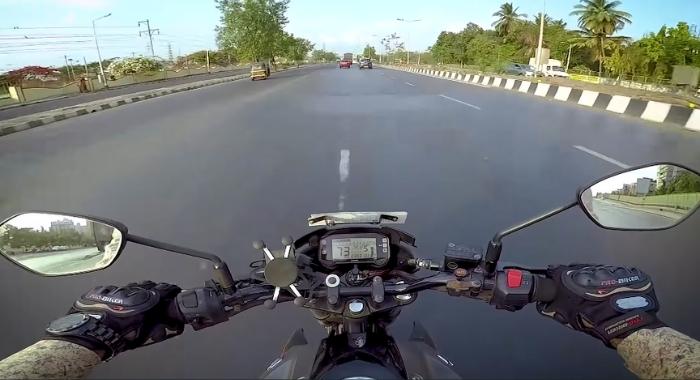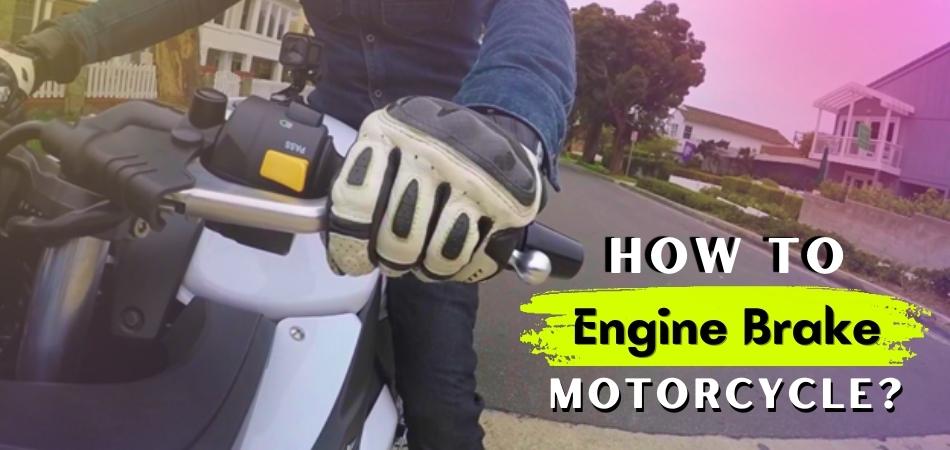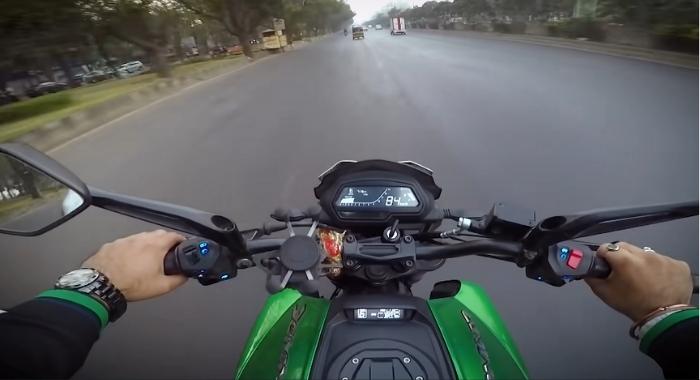Whether you’re a new or experienced rider, you must know that taking an engine break is not everyone’s cup of tea. That is because most riders feel more comfortable and used to front and rear brakes.
However, if you’re interested in engine braking and don’t know how to do the engine braking on a motorcycle, you landed in the right place. For engine braking, simply pull the clutch, lower the rpm then downshift the gear and slowly release the clutch.
See how easy the engine braking mechanism is. Plus, if you want to know about the whole mechanism in detail, then do nothing; just follow this article.
Here in this article, we will show everything related to how to engine brake a motorcycle. Stick around.
What is the Purpose of An Engine Break?
Slowing down your motorbike efficiently is the main reason most riders opt for engine braking instead of other brake facilities. Basically, an engine brake means releasing the accelerator and downshifting the gear.

Releasing the accelerator means the piston will not be able to pull air and fuel into the cylinder. Not being able to pull air into the cylinder will create an empty place in the cylinder, which will make a power cut for the bike.
The power cut will make your motorbike’s rear wheel slower. In short, the engine brake utilizes vacuum-formed drags to compress the pressure and reduce the speed. Moreover, downshifting the gear increases the engine braking efficiency.
How to Engine Brake Motorcycle [Step by Step]

The mechanism of the engine brake motorcycle is really simple, and by following this section, you can learn about it in detail. In this section, we’ll discuss how to take an engine break on your motorcycle step by step. Have a look:
Pull The Clutch And Make Sure The RPM Isn’t Too High
Release the throttle and then pull the clutch. It’s the most crucial part that will help to slow down the RPM. Plus, you can understand if the RPM is too high or low by checking the tachometer and listening to the sound of your motorbike.
Downshift The Gear
Once you make sure the RPM is low, it’s time to downshift the gear. Downshifting the gear is the key part of the engine break of a motorbike. Whatever gear you’re in now, just drop down a gear.
Suppose you’re in the third gear, simply shift down to the second gear. Or, if you’re in the second gear, then simply shift the gear to the first gear. Moreover, for more efficiency over downshifting, try to perform rev-matching.
Release The Clutch:
If you don’t want to experience a hard jerk during the transition between gears, then releasing the clutch is necessary. Your motorcycle will slow down naturally when you release the clutch. And this is how you can reduce the speed and stop the bike without even using other brakes.
When You Should Not Perform Engine Break?
Yes, you heard right. There are some particular times that you should not perform an engine break. Well, you should not make an engine brake when you are unfamiliar with it, and you’re a new motorbike rider.

As a new bike rider, it could be tough for you to maintain the gear shifting as well as control the RPM. Unfortunately, if you fail to maintain gear downshifting and control the RPM, it can cause engine damage and also can cause physical injuries as well.
On the other hand, using the engine brake randomly can cause issues with the motorbike engine. Besides creating issues, random engine brakes can also hamper the engine’s lifespan as well.
Is It Necessary to Do Rev Matching During Downshifting?
When it’s about the necessity of rev matching during downshifting, the answer could be both YES and NO. However, it’s a good idea to do rev-matching as it will prevent sudden hard braking feeling.
In easy words, rev matching is one of the key techniques that will lead to smooth downshifting by trimming the sudden jolt issues. And if you’re looking for guidance over rev matching, follow the section below:
- At the first, you need to pull the clutch in when you’re taking the engine brake
- Then give the throttle a small spine and then perform the downshift (always remember to get an appropriate rpm level before shifting the gear)
- Once you shift the gear, simply release the clutch, and you’re done.
Note: As you can see, performing rev matching during downshifting is really an easy task. Moreover, always try to perform the throttle revving and shifting quickly and together before the rpm level drops rapidly. You can easily learn this rev matching by patching it a couple of times.
Read Also: How To Start A Motorcycle Without A Key?
Closing Thoughts
Since you’re here, that means you might find this article helpful. Actually, we’ve tried to include everything related to engine braking. Plus, we’ve also shown steps on how to engine brake a motorcycle with ease.
So, if you’re confident enough about engine braking, try from now, and we can guarantee that you will like it. It’s the safest option for the emergency brake, and this brake system is also good for steep track riding.
Additionally, the engine brake also increases the lifespan of your brake pads by preventing wear and tear. Lastly, this brake facility will also let you enjoy an easy ride off without facing any jerk during braking.
